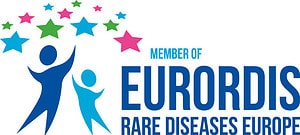General Info for CPEO: Chronic Progressive External Ophthalmoplegia
Overview
Chronic Progressive External Ophthalmoplegia, also known as CPEO, is a symptom that can occur in several mitochondrial conditions. Mitochondria are parts of a cell that help turn the energy we get from food into energy that the body can use. They are also important in the communication between body parts and creating other materials the body needs. Mitochondrial conditions can cause a variety of signs and symptoms in many parts of the body, particularly those that use a lot of energy like muscles and the brain.
Alternative Names
- CPEO
Genetics
Cause and Genetics
CPEO can be part of several genetic conditions. These can be due to changes in either the nuclear DNA, a set of DNA present in every cell of the body and inherited from both parents, or the mitochondrial DNA, a set of DNA contained in the mitochondria of a cell. The way the condition is passed down in families, called inheritance, will depend on the exact gene involved for the person with CPEO. Both males and females can have CPEO.
Frequency
Frequency - More Information
The exact frequency of CPEO is unknown and likely underdiagnosed.
Affected Biological Gender
Both Male and Female
Signs and Symptoms of CPEO: Chronic Progressive External Ophthalmoplegia
CPEO involves a loss of muscle function in the eye and eyelid. Features usually begin between the ages of 18 to 40 years.
These commonly include:
- Weakness or paralysis (inability to move) of the muscles that move the eye called ophthalmoplegia
- Drooping of the eyelids known as ptosis
CPEO can occur by itself, called an isolated feature, or present with other signs and symptoms, called a syndromic presentation. Individuals who are living with CPEO and present with other signs and symptoms are sometimes said to have “CPEO plus.”
Other signs and symptoms can include:
- Muscle pain or weakness called myopathy, especially during exercise
- Problems with muscle coordination (ataxia) or tremors (parkinsonism)
- Difficulty swallowing
- Hearing loss caused by nerve damage in the inner ear called sensorineural hearing loss
- A feeling of “pins and needles” or loss of feeling in limbs called neuropathy
- Depression or other mental health conditions
Treatment of CPEO: Chronic Progressive External Ophthalmoplegia
Treatment and Management
As of 2022, there is currently no FDA-approved therapy for CPEO. However, there are treatment and management options related to the symptoms of CPEO. This may include:
- Surgery for ptosis or strabismus if double vision occurs
- Special glasses that have a “ptosis crutch” to lift the upper eyelid
- Mitochondrial supplements like coenzyme Q10 in some cases
- Avoidance of mitochondrial toxins like certain drugs, tobacco, and alcohol
Individuals living with CPEO typically see an eye doctor called an ophthalmologist regularly.
Type of Specialists and Clinicians
- Neurology
- Ophthalmology
- Other
- If someone has CPEO and additional symptoms (CPEO plus), they may follow up with additional doctors like neurology for their muscles and brain.
Resources
- Chronic progressive external ophthalmoplegia – About the Disease – The National Institute of Health
- Chronic progressive external ophthalmoplegia – NORD (National Organization for Rare Disorders) – The National Organization for Rare Disorders
Connecting with others impacted by a rare disease allows for vital information to be shared about day-to-day life, prevents isolation, and gives hope. Please contact MitoAction for peer support opportunities at 888-MITO-411 or email mito411@mitoaction.org.
Other resources we recommend are:
Download the CPEO: Chronic Progressive External Ophthalmoplegia Fact Sheet (PDF)
MitoAction does not provide medical advice, diagnosis, treatment, or legal advice. It is essential that all those living with or caring for someone with a Mitochondrial or FAOD disease have an emergency protocol letter. These letters, which are written and signed by a doctor, share details about prescribed treatment during crises and in emergency room settings. Always check with your doctor if you or your child has concerns as everyone may present with symptoms differently. Before beginning any treatment or therapy, please consult with your physician.
Last Updated: 11/15/2022









